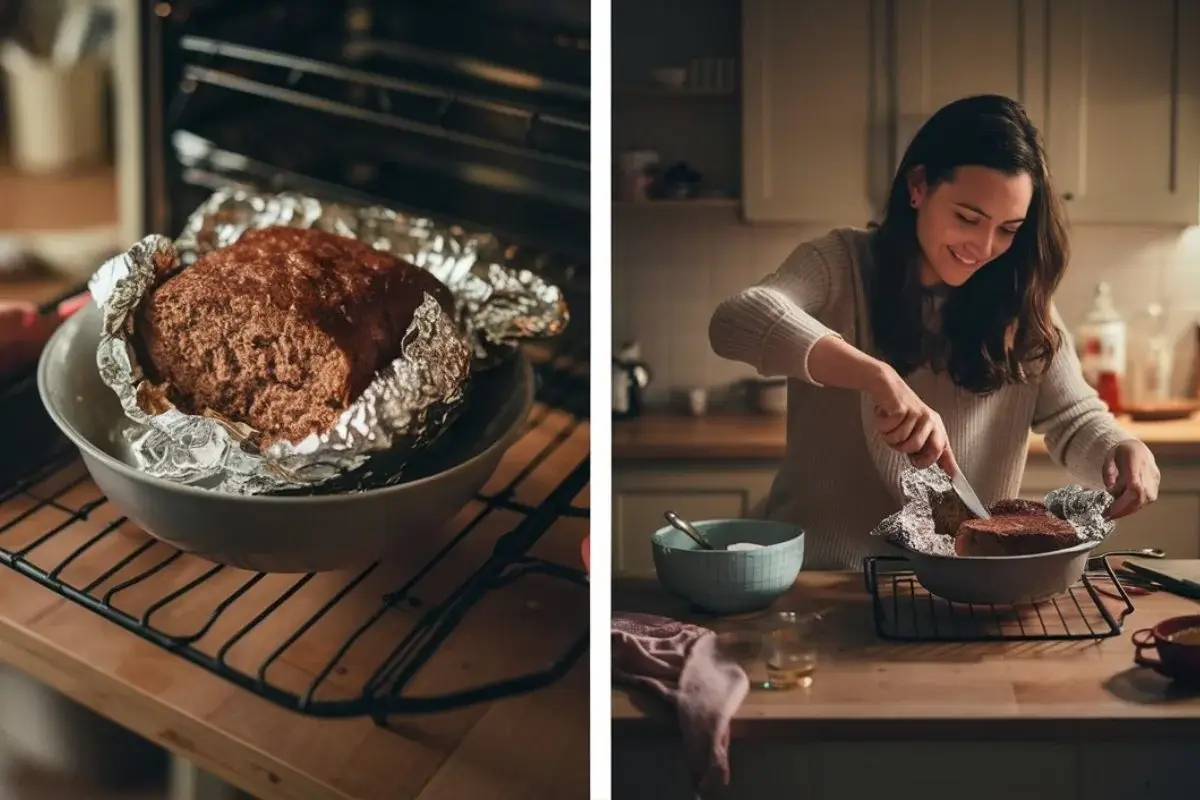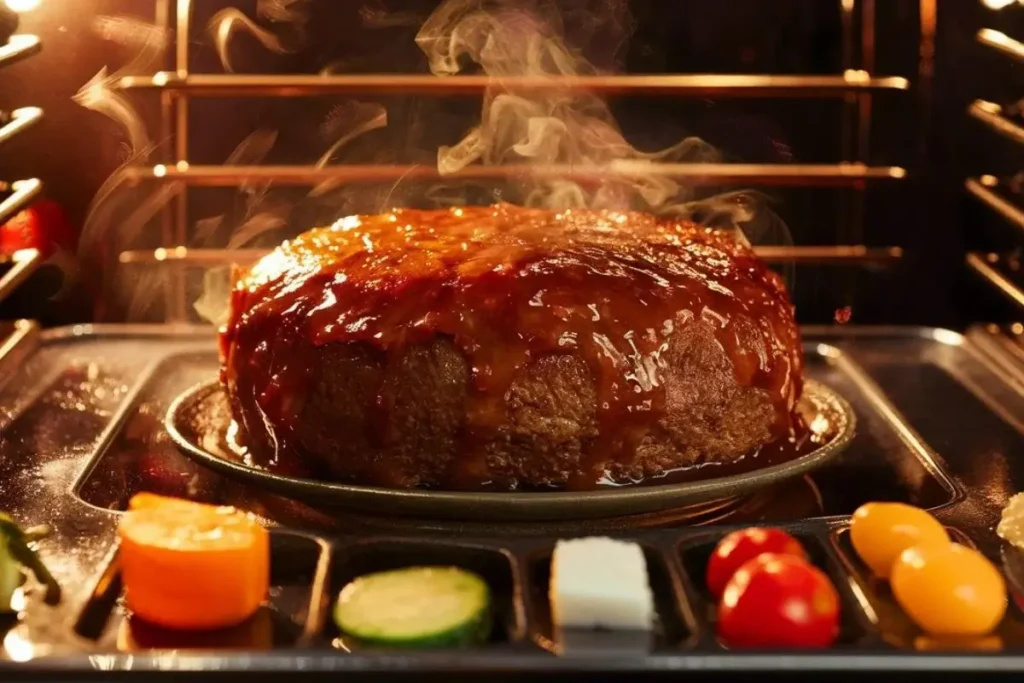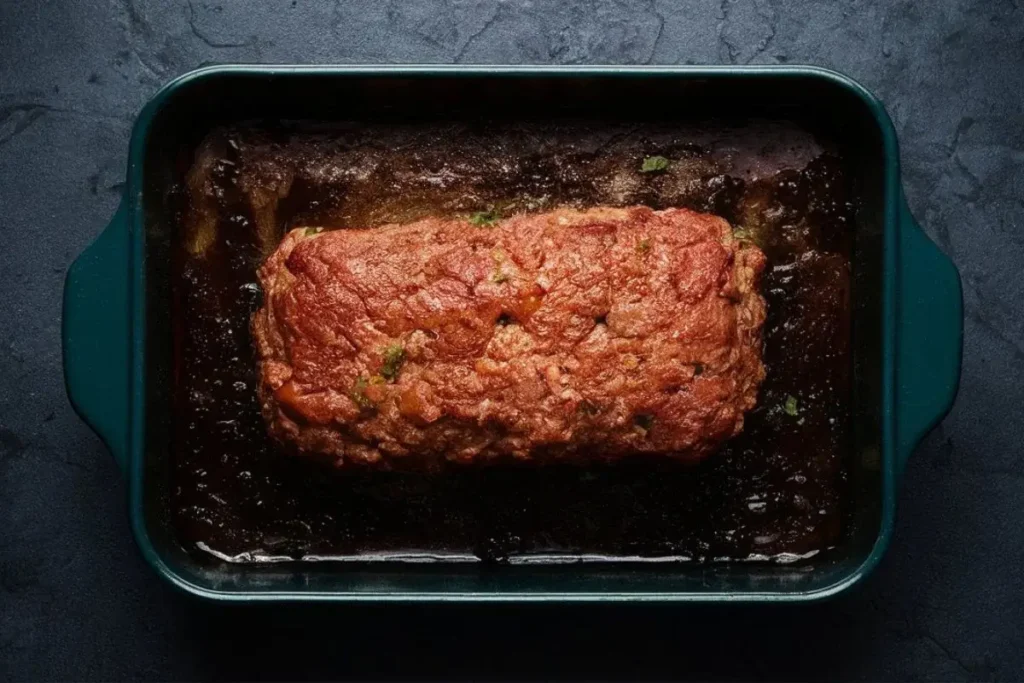Baking meatloaf is almost a rite of passage in the culinary world, whether you’re a homemaker or a budding chef. However, the perpetual question remains: Do you cover meatloaf when baking? This article dives deep into this query, unpacking both traditional practices and innovative methods to ensure your meatloaf is both moist and flavorsome. We’ll explore the benefits and drawbacks of covering your meatloaf during baking, provide a detailed guide on how to perfect your meatloaf with or without a cover, and offer insights into making your meatloaf the star of your dinner table. Buckle up as we embark on this meatloaf mastery journey!
Understanding Meatloaf Baking Techniques
Basic Principles of Baking Meatloaf
Baking a meatloaf seems straightforward, yet it’s an art that balances moisture, flavor, and texture. The foundation of a great meatloaf lies in its preparation — mixing the right proportions of meat, binders like breadcrumbs, and seasonings. It’s crucial to mix these ingredients gently; overworking the mixture can lead to a dense, tough meatloaf.
When it comes to baking, one of the most critical decisions is whether to bake the meatloaf in a covered or uncovered fashion. This choice significantly affects the dish’s moisture and texture. Ideally, the oven should be preheated to ensure even cooking, a point often echoed by culinary experts. Furthermore, the type of pan used can influence the cooking process; traditional loaf pans versus baking sheets can yield different results.
Why Covering Matters: Moisture and Texture
Covering a meatloaf during part or all of the baking process can trap steam and moisture within the meat, ensuring it remains juicy and tender. If you’re leaning towards a moist, uniformly cooked meatloaf, covering it with aluminum foil might be the way to go. However, if you’re after that desirable crusty top, you might opt to leave your meatloaf uncovered, particularly towards the end of cooking.
The dilemma often boils down to personal preference and the specific outcomes you desire. For those who relish a juicy interior with a slight crust, starting the bake with a cover and then removing it can create that perfect balance. It’s a flexible technique that caters to various tastes and textures, ensuring your meatloaf is nothing short of delightful.
In the next section, we’ll delve deeper into the arguments for and against covering meatloaf during baking, helping you make an informed decision based on your culinary goals. Stay tuned as we explore these aspects and more, ensuring your next meatloaf is baked to perfection!
Should You Cover Meatloaf When Baking?
When it comes to baking meatloaf, one of the key decisions is whether to cover it. This choice can dramatically influence the texture and flavor of your finished dish. Let’s break down the advantages and potential downsides to covering your meatloaf during the baking process.
Benefits of Covering Meatloaf
Covering meatloaf while it bakes can offer several benefits, primarily focusing on moisture retention. When covered, typically with aluminum foil, the meatloaf retains more of its natural juices, which helps prevent it from drying out. This method is particularly beneficial if you’re using leaner meats, which are prone to becoming dry and tough when overcooked.
Moreover, covering meatloaf helps to distribute heat more evenly throughout the meat, reducing the risk of undercooked sections. This can be especially helpful for larger loaves, ensuring that every slice is perfectly cooked through.
Drawbacks of Covering Meatloaf
However, there’s a flip side to consider. Covering meatloaf throughout the entire baking process can sometimes prevent the top from developing that much-desired caramelized crust. Many meatloaf aficionados treasure this crust for its rich flavor and satisfying texture.
Furthermore, a covered meatloaf might not achieve the same depth of flavor as an uncovered one, as the browning reactions that contribute to taste and aroma are less active under cover.
Expert Opinions on Covering During Baking
Culinary experts often suggest a hybrid approach to address both the benefits and drawbacks of covering meatloaf. By starting the baking process with the meatloaf covered and then removing the cover for the final portion of baking, you can retain moisture while still allowing the top to brown and crisp. This method offers a balance, providing the best of both worlds.
This approach aligns with the advice from notable cooking resources, which suggest that whether you choose to cover your meatloaf might depend on your texture and flavor preferences as well as the specific recipe you are following.
In the next segment, we will guide you through a step-by-step approach to baking your meatloaf, with tips on how to decide between covered or uncovered methods based on the outcomes you’re aiming for. Keep reading to perfect your meatloaf baking technique and impress at your next family gathering or dinner party!
Step-by-Step Guide to Baking Meatloaf
Mastering the art of baking meatloaf requires a keen understanding of the steps involved. Here’s a comprehensive guide to help you bake the perfect meatloaf, covering everything from preparation to the final baking process.
Preparing Your Meatloaf for the Oven
First things first, let’s prepare the meatloaf mixture. Start by combining your choice of ground meat—beef, turkey, or chicken—with a blend of seasonings, breadcrumbs, and binding agents like eggs. Remember, using a mix of meats can enhance both flavor and texture. For a more detailed texture and added moisture, consider sautéing onions, carrots, or mushrooms before adding them to the mix.
To ensure even mixing without overworking the meat, gently fold the ingredients together until just combined. Overmixing can make the meatloaf tough and dense once baked. Shape the meatloaf into a loaf on a parchment-lined baking sheet or place it into a lightly greased loaf pan, depending on your preference for shape and crust development.
Deciding Between Covered or Uncovered Baking
Now, onto the crucial decision—whether to cover your meatloaf. If you prefer a moist meatloaf with minimal crust, cover the loaf with aluminum foil for the majority of the baking time. This method helps to lock in moisture and cook the meatloaf evenly, reducing the risk of drying out.
However, if you’re aiming for a crusty top and edges, consider leaving your meatloaf uncovered. This will allow the exterior to brown nicely, creating a rich, caramelized crust. For those who like a bit of both, start with the meatloaf covered, then remove the foil in the last 15-20 minutes of baking to allow the crust to develop.
Temperature Settings and Cooking Time
The temperature at which you bake your meatloaf is critical for achieving the perfect finish. A standard temperature is 350°F (177°C), ideal for cooking the meatloaf thoroughly without burning the exterior. Bake your meatloaf for approximately one hour, though this may vary based on its size and thickness. Always use a meat thermometer to ensure the internal temperature reaches 160°F (71°C) for safety and doneness.
Allow your meatloaf to rest for approximately 10 minutes post-baking before cutting into it. This resting period allows the juices to redistribute throughout the meatloaf, enhancing its flavor and moisture content.
In the next section, we’ll delve into advanced techniques to elevate your meatloaf recipe, incorporating creative ingredients and mix-ins that will set your dish apart. Stay tuned for more expert tips on making your meatloaf a standout success at any meal!
Techniques for Perfect Meatloaf
Elevating your meatloaf recipe to perfection involves more than just basic preparation and baking; it’s about infusing every bite with flavor and ensuring a mouth-wateringly juicy texture. Here are some expert techniques that can help you achieve just that.
Getting the Perfect Crust
For many, the hallmark of a great meatloaf is its crust. Achieving that perfect, crispy exterior begins with deciding whether to bake your meatloaf covered or uncovered. As previously mentioned, if a crusty top is what you’re after, baking the meatloaf uncovered for the entire duration is advisable. However, brushing or drizzling a glaze over the top about 20 minutes before the end of baking can enhance both the flavor and the crust’s texture. Popular glaze options include a mixture of ketchup, brown sugar, and mustard, which caramelizes beautifully under the heat.
Ensuring Moisture and Flavor
To ensure your meatloaf doesn’t just taste great but also retains moisture, consider adding moistening agents to your mix. Ingredients such as soaked breadcrumbs or grated vegetables like zucchini and carrots can add significant moisture. These ingredients also help the meatloaf stay together without drying out during baking.
Another tip is to layer flavors by incorporating herbs and spices into your meat mixture. Ingredients like minced garlic, chopped fresh herbs, or a dash of Worcestershire sauce can elevate the flavor profile significantly. Remember, the key to a flavorful meatloaf lies in the balance of ingredients that complement each other without overpowering the meat.
Use of Foils and Lids
As touched on earlier, the decision to cover meatloaf with foil or a lid during part of the baking process can impact the texture by trapping steam and moisture. If you’re using a lid, ensure it’s oven-safe, such as those made from glass or metal. For foil, tent it over the loaf loosely to avoid sticking to the top and allow for some air circulation, which helps in creating a bit of crust while still keeping the loaf moist.
Advanced Tips and Tricks
Taking your meatloaf from good to great involves a few culinary tricks that can enhance both the preparation process and the final taste.
Adding Flavor and Moisture
Infusing your meatloaf with flavor and moisture starts with the selection of meat. A blend of ground meats—such as beef and lamb—can provide a richer taste and tender texture. For added moisture and flavor, incorporate ingredients like sautéed onions, soaked breadcrumbs, or even a bit of grated cheese within the mix.
Alternative Techniques Without Cover
For those who prefer a drier, crustier meatloaf, baking without a cover is the way to go. Enhance the crust by applying a glaze halfway through baking, allowing it to caramelize and add a layer of flavor. You can also experiment with forming your meatloaf on a wire rack over a baking sheet, which allows the heat to circulate evenly around the entire loaf, creating a uniformly crisp exterior.
Creative Ingredients and Mix-Ins
Don’t be afraid to get creative with your meatloaf! Mixing in ingredients like sun-dried tomatoes, chopped olives, or even a swirl of pesto can create unique flavors that make your meatloaf stand out. Additionally, consider a topping of mashed potatoes or a sprinkle of crispy onions for texture and visual appeal before serving.
By incorporating these advanced techniques and tips into your meatloaf preparation, you’ll not only enhance the dish’s flavors and textures but also impress your diners with your culinary creativity. Stay tuned for the final part of our guide, where we address some frequently asked questions about meatloaf preparation!
FAQs About Baking Meatloaf
When it comes to baking meatloaf, a few questions frequently pop up. Addressing these can help you perfect your technique and ensure that every loaf comes out just right. Let’s dive into some common inquiries.
Should Meatloaf be Cooked Covered or Uncovered?
The decision to cook meatloaf covered or uncovered hinges on your preference for texture and moisture. Covering meatloaf, especially in the initial stages of baking, helps to retain moisture and ensures even cooking. For those who prefer a crispy crust, baking the meatloaf uncovered for the entire duration is beneficial. Alternatively, combining both methods by covering initially and then finishing uncovered can provide a balance of moisture and a crispy exterior.
How do you keep meatloaf moist when baking?
Keeping meatloaf moist involves a few key practices:
- Use fatty meats: A blend of meats, some with higher fat content, can keep the meatloaf juicy.
- Add moist ingredients: Ingredients like grated vegetables or soaked breadcrumbs can add moisture to the mixture.
- Cover during baking: Covering the meatloaf with foil for part of the cooking time can help to lock in moisture.
What temperature should you cook meatloaf at?
The ideal temperature for baking meatloaf is generally 350°F (177°C). This temperature allows the meatloaf to cook thoroughly without the exterior burning, ensuring that the inside reaches the safe minimum internal temperature of 160°F (71°C) as recommended by food safety guidelines.
Do you use foil or parchment for meatloaf?
Both foil and parchment paper are excellent options for baking meatloaf:
- Foil: Great for covering the meatloaf to retain moisture. It can also be used to line the baking tray for easier cleanup.
- Parchment: Ideal for preventing sticking and achieving a lightly crisped exterior. It’s especially useful if you prefer to shape your meatloaf directly on a baking sheet.
Conclusion
In wrapping up our comprehensive guide to baking meatloaf, we hope you’ve gained valuable insights and techniques to enhance your cooking. Whether you’re a novice in the kitchen or a seasoned cook, understanding the nuances of how to bake meatloaf effectively can make all the difference in achieving a dish that’s both satisfying and delicious.
Remember, the key to a great meatloaf lies in balancing moisture and flavor while adapting the cooking method to suit your texture preferences. Feel free to explore various ingredients and methods until you discover your preferred combination.
Now that you’re armed with all the information and tips, it’s time to start baking! Enjoy the process and look forward to a delightful meal that will surely impress your family and friends. Happy cooking!



